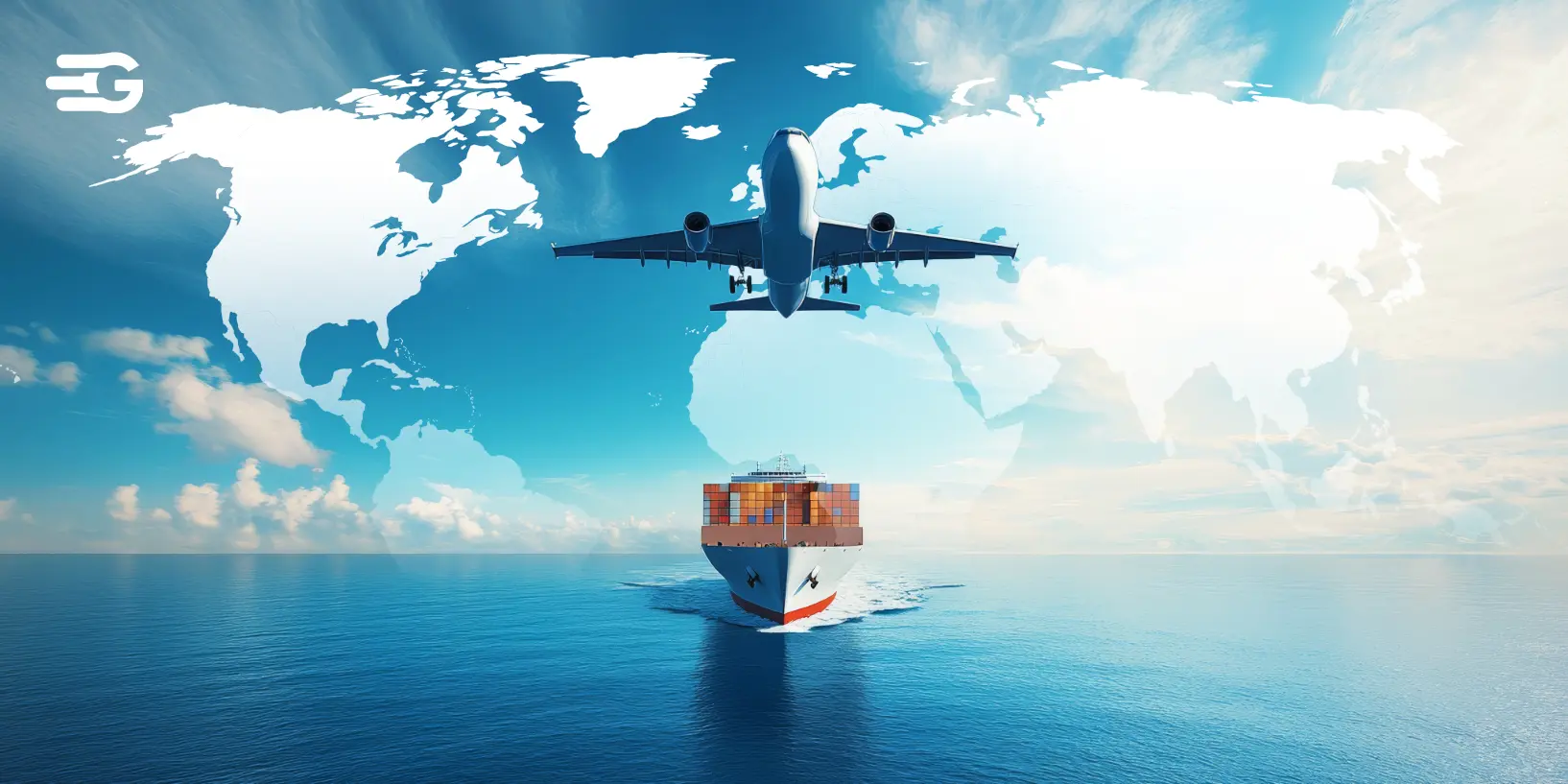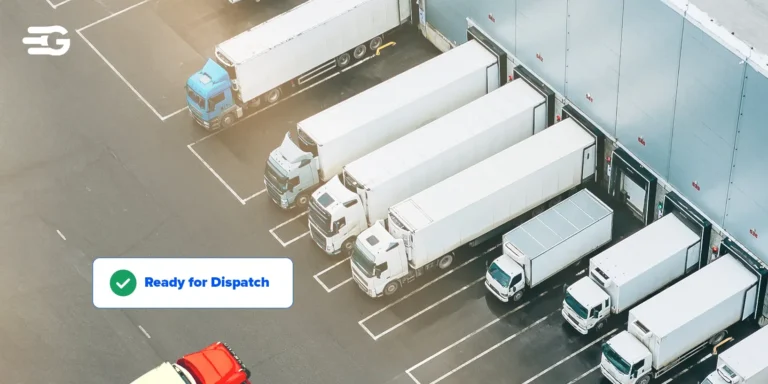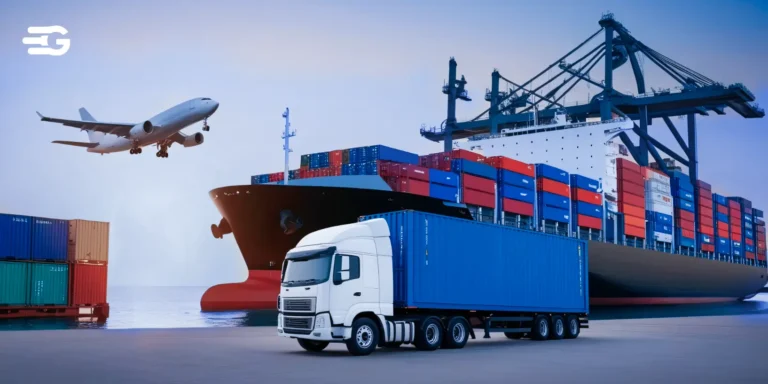What is International Logistics? Objectives, Processes, and Tips
International logistics involves the strategic planning and coordination required to move goods across international borders. It demands precise execution, quick decision-making, and systems that align operations across global markets.
Businesses today face challenges like rising freight costs, poor shipment visibility, and inefficient manual processes. At GoComet, we’ve seen these roadblocks up close and built tools that solve them with automation, real-time tracking, and smarter planning.
“The logistics and supply chain industry faces challenges like fragmented visibility, inefficiencies in freight procurement, unpredictable shipping costs, and delays due to manual processes, which GoComet addresses by offering AI-driven tools to streamline operations, provide real-time tracking, and optimize procurement for cost efficiency.” – Pramod Pardale, Head of Supply Chain Operations at VVF
What is International Logistics?
International logistics refers to the complete management of goods and the data associated with them as they move from one country to another. It includes everything from procurement and international shipping to customs clearance, warehousing, documentation, and last-mile delivery. Accuracy and efficiency in each area are critical to reducing costs and ensuring timely delivery.
Unlike domestic logistics, international logistics brings additional layers of complexity, different legal requirements, fluctuating exchange rates, cultural variations, and longer lead times. To stay competitive, companies need systems that help them respond quickly and manage these variables efficiently.
The Importance of International Logistics
International logistics plays a central role in enabling global commerce. It connects producers to consumers across borders, supports economic growth, and ensures on-time deliveries. Without it, trade would be slow, unreliable, and expensive.
Key components include freight procurement, transport selection, customs compliance, warehousing, tracking, and final delivery. Each step requires proper coordination. Companies that implement digital systems gain agility, improve accuracy, and meet customer expectations more consistently.
The Difference Between International and Domestic Logistics
Understanding the differences between domestic and international logistics is key to scaling supply chains effectively. Each has its own structure, complexity, and requirements.
Domestic Logistics
Domestic logistics manages the flow of goods within a single country. Operations are generally simpler due to uniform laws, one currency, and consistent transportation infrastructure. This allows for easier planning, quicker delivery times, and fewer disruptions.
International Logistics
International logistics handles the transportation and coordination of goods between countries. It requires managing documentation, compliance with trade regulations, currency conversions, time zone differences, and longer transit times. Although more complex, international logistics enables businesses to expand to new markets and serve customers worldwide.
Key Objectives of International Logistics
To run efficient international logistics operations, companies need to prioritize the following objectives:
Efficient transportation
Select carriers and plan routes that balance cost, speed, and reliability. GoComet’s platform simplifies this process with smart comparison tools.
Inventory accuracy
Align shipping schedules with demand to avoid excess stock or missed sales. This reduces storage costs and improves cash flow.
Customer reliability
Keep customers informed and satisfied with real-time tracking and accurate ETAs.
Cost control
Use analytics to monitor pricing trends and prevent cost overruns. Our AI tools help secure the best freight rates and reduce extra charges.
Flexibility and responsiveness
Stay ready to adjust plans when disruptions occur. Quick rerouting and vendor changes keep operations on track.
Challenges of International Logistics
Global logistics presents unique challenges. Delays at customs, inconsistent carrier service, and limited visibility can derail schedules. Currency volatility, weather disruptions, and geopolitical risks add to the complexity.
Manual processes make matters worse by slowing down workflows and increasing the risk of errors. A modern logistics strategy must rely on automation and real-time systems to stay efficient and responsive.
Improving Logistics at Essentra Components
Essentra Components managed over 80 international shipping routes but faced delays and high freight costs due to manual processes. Their teams relied on spreadsheets and emails, limiting visibility and coordination.
With GoComet, they integrated GoTrack for live shipment updates, GoShipment for centralized shipment control, and GoProcure to improve vendor engagement. GoInvoice simplified invoicing and reduced payment errors.
The result was a 4.34% reduction in freight costs, faster decision-making, and better collaboration across departments.
“GoComet gave us full visibility into our 83 global shipment routes, helping us track costs, optimize logistics, and make data-driven decisions.” – Sandy Gullis, EMEA Freight Manager
Core Processes in International Logistics
A successful logistics operation depends on multiple integrated processes:
Procurement
GoProcure automates vendor selection and quote comparison to speed up contracting.
Transportation
With access to more than 293 ocean carriers, GoComet helps businesses manage routes, capacity, and pricing.
Customs clearance
Document verification using OCR ensures compliance and prevents delays.
Warehousing
Efficient placement of inventory shortens delivery timelines and reduces holding costs.
Distribution
Real-time tracking and coordination help teams execute timely and accurate final deliveries.
Analytics and reporting
Performance dashboards help track carrier reliability, route efficiency, and cost trends for better planning.
Tips for Better International Logistics
Apply these strategies to streamline your logistics workflows:
Automate frequent tasks
Save time and reduce errors with automated tracking and invoicing.
Ensure compliance
Avoid customs issues with document automation and real-time validation.
Improve procurement speed
Centralized procurement tools reduce delays and improve vendor response rates.
Plan for disruptions
Have alternate routes and shipping options ready. Use predictive tools for better ETA management.
Use centralized dashboards
Unified tracking systems improve visibility and help teams act quickly.
Make decisions based on data
Track trends in freight rates, transit times, and vendor performance to improve long-term results.
Smarter International Logistics
Modern supply chains demand efficiency, visibility, and adaptability. Businesses that invest in the right tools gain speed, reduce costs, and deliver better customer service. Whether managing one international route or hundreds, upgrading your logistics system is essential.
Smart logistics isn’t just about moving goods. It’s about using data and automation to do it better. With GoComet’s solutions, businesses gain control, transparency, and resilience. That’s how supply chains become a source of strength, not stress.






